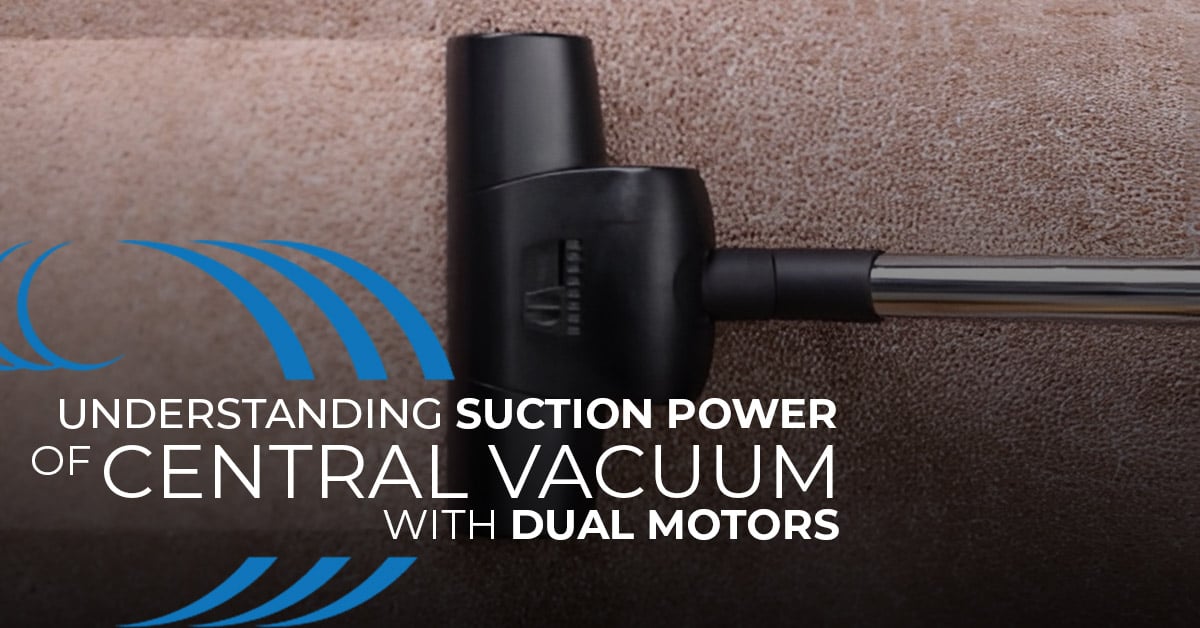
Boosting Productivity in Office Buildings with Central Vacuum
In today’s fast-paced work environment, maintaining a clean and organized office space is crucial for productivity. Office buildings often struggle with keeping their premises clean

Central vacuum systems with dual motors are renowned for their superior suction power. This makes them a preferred choice for large homes or commercial properties where high-performance cleaning is a necessity. In this article, we will delve into the suction power of dual motor central vacuum systems, explain how dual motors enhance suction, and discuss factors that influence suction in these systems.
The suction power of a vacuum system is critical to its performance. It determines the vacuum’s ability to remove dust, dirt, and debris from various surfaces. Dual motor central vacuum systems are known for their exceptional suction power, thanks to the presence of two motors that work in tandem. This provides a higher airflow, resulting in stronger suction compared to single motor systems.
The strength of a vacuum’s suction power is often measured in Airwatts, a unit that combines the vacuum’s airflow and water lift to provide a comprehensive measure of its cleaning power. Dual motor systems typically have higher Airwatts ratings, indicating their superior cleaning capabilities.
Dual motors in a central vacuum system work together to enhance the system’s overall suction power. While one motor is responsible for generating airflow, the other increases the water lift (the vacuum’s ability to lift debris). This combined effort results in a powerful suction force that effectively removes dirt and dust from large areas.
The use of dual motors also allows for greater efficiency and longevity. Since the workload is shared between two motors, each motor undergoes less strain during operation, thereby prolonging the system’s lifespan.
Understanding the performance of a central vacuum system entails more than just assessing its suction power. Other factors such as filtration efficiency, noise level, dust capacity, and energy efficiency also play a crucial role.
Nevertheless, suction power remains a key performance indicator. It directly influences the vacuum’s ability to clean effectively. For dual motor central vacuum systems, the enhanced suction power ensures thorough cleaning across all floor types and surfaces.
Suction power in dual motor vacuums is typically measured in Airwatts. This unit takes into account both the vacuum’s airflow (measured in cubic feet per minute) and its water lift (measured in inches).
The combination of these two factors provides a comprehensive measure of the vacuum’s cleaning power. Generally, a higher Airwatts rating indicates a more powerful vacuum. As such, dual motor central vacuum systems often boast high Airwatt ratings, reflecting their superior suction power.
Several factors can influence the suction power of a central vacuum system. These include the number of motors (single or dual), the power rating of the motors, the design of the system, and the quality of its components.
Moreover, regular maintenance is crucial for maintaining optimal suction power. This includes cleaning or replacing filters as needed, emptying the dust collector regularly, and ensuring the system is free from blockages.
In conclusion, the suction power of dual motor central vacuum systems sets them apart in terms of cleaning efficiency and performance. By understanding how these systems work and how their suction power is measured, you can make an informed decision when investing in a central vacuum system for your home or business.

In today’s fast-paced work environment, maintaining a clean and organized office space is crucial for productivity. Office buildings often struggle with keeping their premises clean

Central vacuums in animal shelters & vet clinic: Explore how these systems boost hygiene, efficiency, and air quality.

In the world of home entertainment, a home theater is a luxury that many homeowners dream of. It’s an immersive experience that brings the magic

A central vacuum system is a significant investment that promises convenience, powerful suction, and improved indoor air quality. However, choosing the right central vacuum hose
Our home automation products are at the forefront of technology, offering a blend of convenience, security, and efficiency. As a Homewave dealer, you’ll be part of a network transforming homes into smart, futuristic spaces.
Embark on this rewarding journey with us and leverage the power of innovative technology.
Please fill out this form and become a Homewave Dealer.